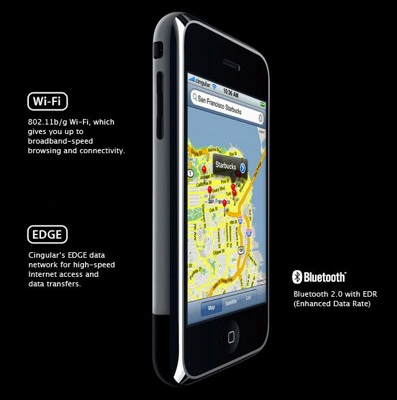This article is more than 1 year old
Cutting the cord: future mobile broadband tech
How internet on the go is going to get much faster
Edge is far from dead - many operators around the world still haven't deployed 3G technologies, and even in the UK once you venture outside major cities Edge is the best you can hope for. Edge is even evolving to support dual-carrier connections: basically one handset supporting two separate Edge connections, doubling the bandwidth without requiring any network upgrade.

So much for O2's decision to go straight to 3G: Apple highlights the iPhone's use of Edge
But even with Edge users still resolutely refused to start using mobile data in a big way: ironically it was O2 who realised that no one was going to be impressed by Edge, and decided against deploying it while pushing ahead with 3G, a step forward it was obliged to go back on when it got the exclusive deal for Apple's iPhone, which only supported Edge connections. The project was even codenamed 'Bono', on the basis that it was worthless without The Edge.
But back in 2000, the mobile industry's self-delusion continued with the promise that 3G services would take the world by storm, and operators paid billions for some 2.1GHz spectrum in which to run 3G networks - their licences prevent them using the technology anywhere else. The 3G GSM standard is W-CDMA (Wideband Code Division Multiple Access) and offers much better data rates by taking advantage of a technology that was already popular in the US whereby multiple users can share the same frequency without mucking about with time slots.
The American Way
Unlike Europe, which was happy to have a central authority mandating GSM as a wireless standard, US carriers deployed a wide range of technologies on the basis that a free market would reward the best one. This resulted in a bundle of different mobile networks, largely incompatible, that have now paired down to a few, most notably CDMA and GSM. These days, GSM is displacing CDMA, but that's thanks to worldwide deployments driving down the cost while pushing up the pressure for compatibility, rather than any inherent technical superiority.
CDMA 2000 EVDO Timeline

CDMA technology is largely owned by Qualcomm, and is based on the idea that each transmission is identified by an encoding system rather than a time or frequency slot. W-CDMA is an FDD standard, so every connection needs a pair of 5MHz-wide bands: one for transmitting, one for receiving. Each pair can be shared with other users thanks to the code division system.
